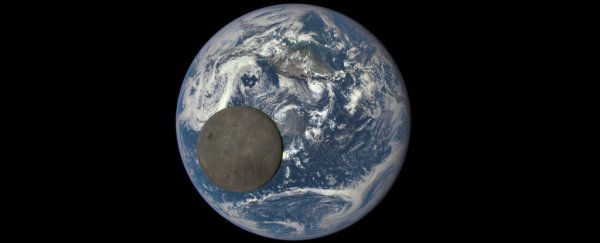It's been decades since humankind last walked on the Moon, but a joint European and Russian mission is set to begin exploring the possibilities for our return and even eventual Lunar colonisation – starting off with a robotic research mission expected to launch in five years' time.
Luna 27, a combined effort by the European Space Agency (ESA) and Roscosmos, the Russian Federal Space Agency, will be the first launch of a new series of missions designed to ultimately return humans to the Lunar surface for the first time since 1972, according to a report by Pallab Ghosh at BBC News.
"We have to go to the Moon. The 21st century will be the century when it will be the permanent outpost of human civilisation, and our country has to participate in this process," said Igor Mitrofanov, one of the lead scientists involved with the mission at the Space Research Institute in Moscow.
Luna 27 will send a lander to an unexplored area at the Moon's south pole to look for water and search for the necessary raw materials to make fuel and oxygen. The initial landing will not be piloted by human astronauts and will only include robots touching down on the surface – highlighting some similarities with plans NASA has previously considered for setting up a privately funded robotic mining operation and base on the Moon.
"The south pole of the Moon is unlike anywhere we have been before," said James Carpenter, lead ESA scientist on the project. "The environment is completely different, and due to the extreme cold there you could find large amounts of water-ice and other chemistry which is on the surface, and which we could access and use as rocket fuel or in life-support systems to support future human missions we think will go to these locations."
If all goes well with the robots in terms of locating sufficient water and chemical resources, subsequent missions anticipate establishing a permanent human settlement on the Moon. "It will be for astronomical observation, for the utilisation of minerals and other lunar resources, and to create an outpost that can be visited by cosmonauts working together as a test bed for their future flight to Mars," said Mitrofanov.
Compared to the 'Space Race' era of the 20th century, in which American and Russian space programs competed fiercely to outdo the other in space exploration, the new joint missions demonstrate a shared spirit of collaboration between the ESA and Roscosmos – which will also help them balance the considerable costs of launching such an ambitious space project.
"This whole series of missions feels like the beginning of the return to the Moon," said Richard Fisackerly, the ESA's lead engineer on the program, "but it is also starting something new in terms of overall exploration of the Solar System."
